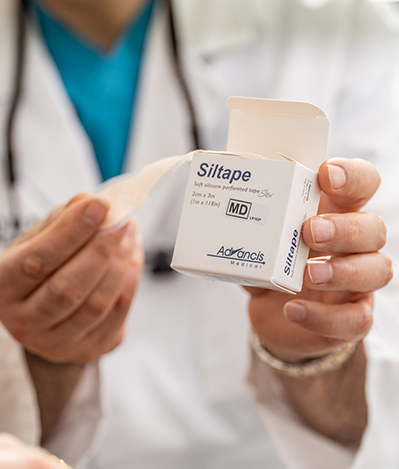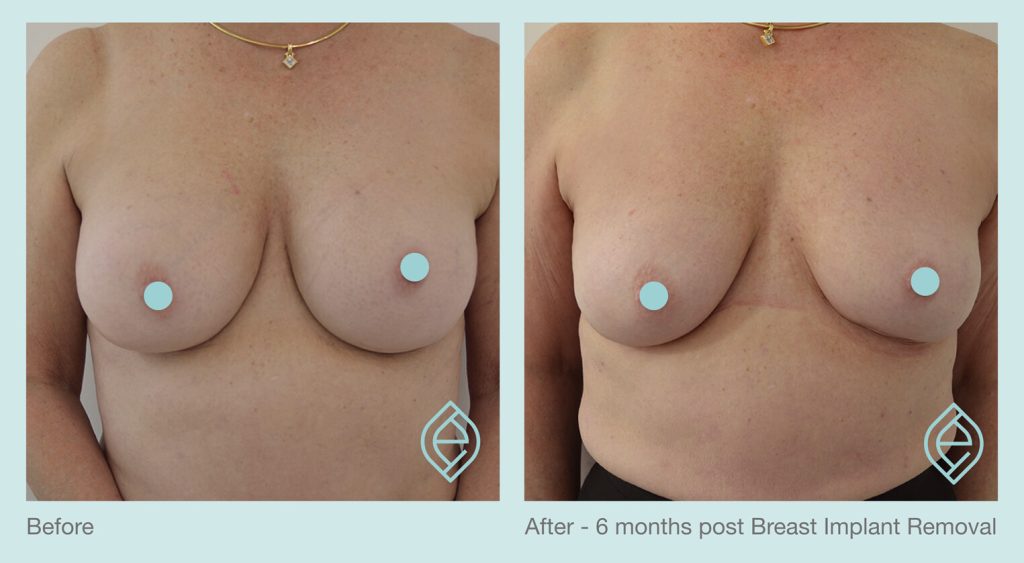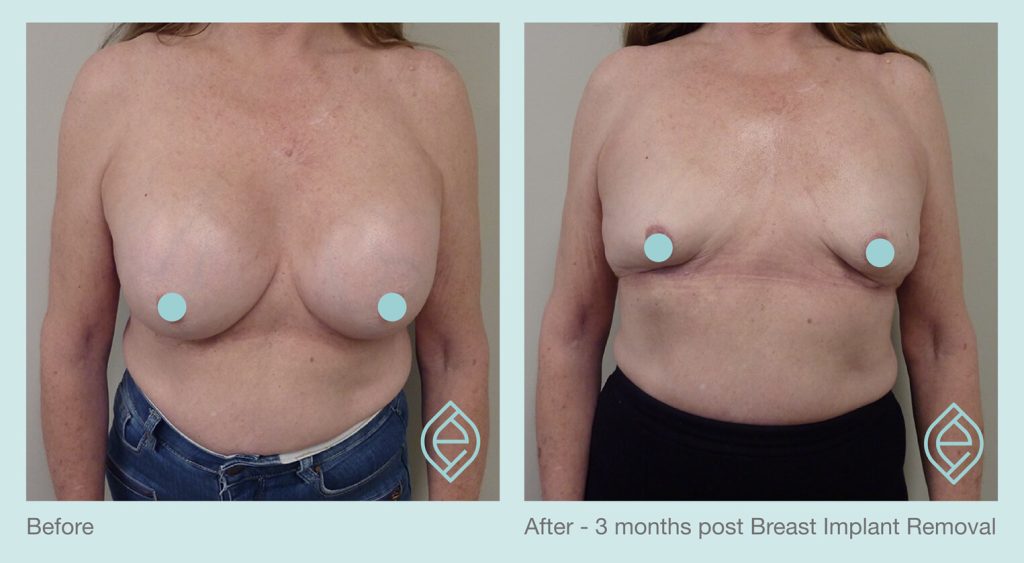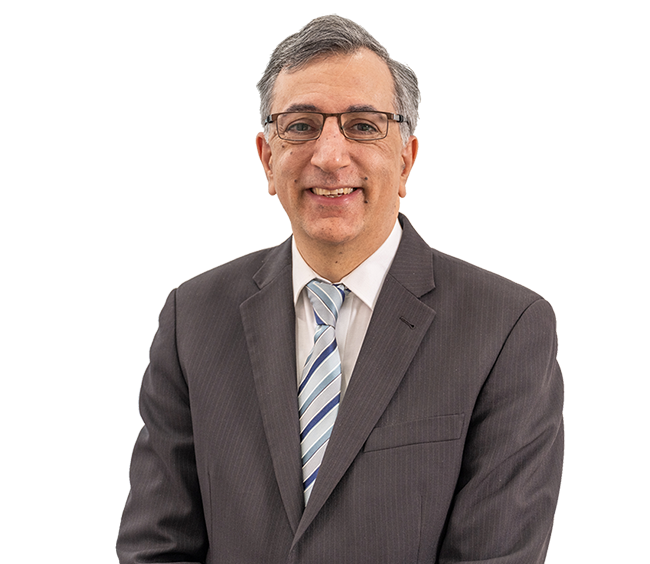Procedure Spotlight
- Implants can be removed due to Capsular contracture, rupture, other medical issues or just lifestyle choice in general.
- This can be done at any time following a breast augmentation procedure
- Implants can be removed only or removed and replaced with new implants
- In some cases, a second surgery may be chosen to perform a breast lift after implant removal to reshape the breasts
Breast Implant removal can happen at any time after the procedure depending on the individual patients’ circumstances.
Women choose to have their breast implants removed (explantation) for several reasons such as:
- Capsular Contracture (hardening of the implant/s)
- Breast implants are uncomfortable or painful.
- Rupture or leak of one or both breast implants
- Position of implants have changed
- No longer wanting the implants or wanting to change the size of implants
- Other medical concerns
Capsular Contracture
Capsular contracture is a complication after a breast augmentation procedure that can happen from a few months post-surgery to decades later. Around all implants, a fibrous capsule (scar tissue) is formed to keep it in place and protected. For reasons that are not totally understood, this capsule can sometimes become thicker and contract. In its severe form, it causes discomfort and can distort the breasts. In these circumstances, the capsules need to be surgically removed and the implants removed and the patient may or may not choose to have them replaced.
Dr Safvat only uses newer 5th generation implants, which means the risk of capsular contracture is significantly reduced.
Technique
Breast Implant Removal is performed in a fully accredited hospital with general anaesthetic by one of our accredited specialist anaesthetists.
If capsular contracture is present, the capsule (scar tissue) and the implant will need to be surgically removed. An incision is made under the breast, the inframammary fold (often in the original breast augmentation scar) to avoid obvious scarring and to provide better access for removal of the capsule. If the patient’s wish is to also have new implants, they are placed in the same pocket or in a new pocket depending on the patient’s breast shape and position.
Removing the implants can leave the natural breasts with ptosis (drooping) or deflation. The procedure can be combined with a breast lift, fat grafting or insertion of a new implant if that is the patients’ preference. However, in some cases it may be best to have the implants removed and then if the patient is not satisfied with the look of the breast, they can then have an additional procedure once the outcome from the breast implant removal is determined.

Dr Safvat will discuss your options with you during your consultation to determine what is the best option with the best outcome for you personally.
Procedure Snapshot
The procedure is done under a general anaesthetic in a fully accredited hospital to minimise the risk of complications.
| Anaesthetic Type: | General Anaesthetic |
| Length of Surgery: | 3-4 hours |
| Stay in Hospital: | 1-2 nights |
| Downtime: | 1-2 weeks |
Recovery
You will be in hospital 1-2 nights after the surgery as you will have drains. Overall, full recovery takes 4-6 weeks, however you will be able to resume work and most activities prior to that. You are required to rest at home for 1-2 weeks following surgery.
Walking is actively encouraged postoperatively but exertion and heavy lifting are not allowed for 3-4 weeks. You will be required to wear a medical garment (bras) for six weeks following surgery.

Preparation
Smoking and being overweight have been shown to cause significant complications after any surgery including Breast Implant Removal surgery. Dr Safvat will insist that you stop smoking a minimum of 3 weeks before your surgery. Ideally you should be in the normal BMI range before your surgery and be overall well and healthy.
Scars
There is no way to prevent scars completely after surgery and everyone can scar differently. However, the techniques Dr Safvat uses to suture his wounds are designed to minimise scarring. What’s more, any scarring will fade over time, especially if they are cared for correctly. Dr Safvat will endeavour to place the wound in the same incision line as was used in the original surgery to avoid an additional scar in most cases if possible.
Patients who have followed Dr Safvat’s protocol for scar management diligently have been very pleased with their progress in reducing and fading of scars. Dr Safvat will also include some LED Light Therapy sessions (available in Miranda only) which will assist with wound healing, scarring and recovery.
Dr Safvat will provide you with his specific protocol for scar management that will help you protect and care for your incision in a way that will minimise scarring.

Complications
While all care and diligence is taken by Dr Safvat to minimise or avoid complications, any surgical procedure can be associated with some general complications and/or specific complications related to the surgery you are having. Choosing a Specialist Plastic Surgeon such as Dr Safvat and having your procedure done in an accredited hospital minimises risks as does using an accredited Anaesthesist.
Some general surgical potential complications are:
• Infection that may require antibiotics (Dr Safvat prescribes all patients antibiotics after surgery to minimise this risk).
• Fluid build-up under the skin (seroma).
• Allergic reaction to dressings and other items used during the procedure.
• The formation of blood collection (haematoma) which could require additional surgery.
• Scars heal differently in different people. Some people are genetically prone to develop keloid scars. Hypertrophic scars develop when there is a complication in the healing process. Whilst not ideal, there is no threat to your health if you develop these.
• Anyone can have a heart attack or stroke from a clot. This risk is slightly increased with anaesthetics.
Some potential complications related to breast implant removal surgery specifically are:
• Removing your implants can cause your breasts to look different to what you are used to. The skin may be stretched, saggy or buckled.
• Generally, if you originally underwent augmentation due to sagginess, your breasts will most likely look like they once did when your implants are removed.
• Additional surgeries such as a breast lift may be required to give you a more aesthetically pleasing result. This is not recommended until around 3 to 6 months after your Implant Removal surgery.
• It is important to be aware of and prepared for the results of the implant removal surgery. It can be quite distressing for some patients to see their breasts look different to what they did with breast implants. If you experience this distress, it is important that you discuss this with Dr Safvat or your GP to refer to you for some Counselling / Psychology sessions.
Cost
Some Breast Implant Removal Surgery is classified as Medically required (such as Capsulectomy) and has a Medicare item number meaning patients should get a rebate from Medicare and their health fund (where applicable). This also means, the hospital costs are usually covered by private health funds depending on the patient’s level and type of coverage. You can also have the procedure done in a Private Hospital as a Self-Funded patient
If the Breast Implant removal is for aesthetic or non-medical reasons, or if the implants are to be replaced, the surgery will be deemed as cosmetic surgery and nothing will be covered by Medicare or your Health Fund. You will be required to pay the Surgeon, the Hospital and the Anaesthetist costs in full.
Dr Safvat will determine the classification of the surgery during your initial consultation and then detailed information regarding costs will be provided to you.
Frequently asked questions
Is breast implant removal the right choice for me?
This all depends on the reasons for breast implant removal in the first place. If the implants are causing discomfort, pain or illness then it may be best to remove the implants. However, if you are wanting implants removed because you no longer like the look of them or are wanting a different size, it should be considered whether going through the surgery is right for you as all surgery carries some form of risk. It is a very personal choice and one that should be seriously considered based on your individual circumstances and health issues. It is best to have a consultation with Dr Safvat to discuss your concerns and expectations as well as the surgical options. Dr Safvat will ensure that you understand the expected outcome as well as any risks and complications so that you can make an informed decision.
What Can I expect over the long term after Breast Implant Removal surgery?
In the long term, some patients may consider additional surgeries such as breast lift or another breast augmentation to reshape the breasts after the implants have been removed.
Are there any alternatives to Breast Implant removal surgery?
Implants don’t need to come out unless they are causing symptoms. Some minor symptoms may be treated with fat grafting but overall an implant that is causing symptoms needs to be removed with or without replacement.
How much does breast implant removal cost?
In some cases, breast implant removal has an item number (capsulectomy) and patients may get a rebate from Medicare and their health fund. The hospital costs may be covered by private health funds depending on the patients’ level and type of cover. At your first consultation, Dr Safvat and his team will discuss all the costs associated with the surgery and provide you with thorough estimates of the fees involved.
Will implant removal cause my breasts to sag?
Unfortunately, removing your implants will change the shape and size of your breasts. The implants may have stretched the skin to a point that the breast may look saggy afterwards. However not everyone will have a saggy breast. Dr Safvat can take you through your options and determine whether you would benefit from a breast lift after implant removal.
My implants are older than 10 years, do I need to have them removed?
Dr Safvat is often asked this question from patients who were told their implants need to be removed after 10 years. His reply is implants should only be removed if they are causing problems. It is not a time dependent phenomena. But as a general rule, most new breast implants should last more than 10 years. If you aren’t experiencing any issues and you’re still happy with the shape and size of your breast, implant removal is not necessary. With this being said, if you haven’t had your implants checked in a while, you may want to have them checked to ensure they’re still healthy. From there, you can discuss your options with Dr Safvat and determine whether you should remove or replace them.
What is the History of Breast Implants?
The first breast implant was done in 1962 by Cronin & Gerow in the US. These 1st generation implants were viscous silicone in a thick shell. They had a very high incidence of capsular contracture.
The 2nd generation implants were developed in mid to late 70’s and had a less viscous silicone, inside a thin smooth shell. This resulted in less capsular contracture but increased the incidence of the shell rupturing and the silicone gel leaking out.
The 3rd generation implants were developed in the early to mid-80’s to stop shell failure. The shell was more sophisticated and stronger.
The 4th generation implants had the same shell as the 3rd generation implants but the surface was roughened and called textured surface. This again has been shown to decreased capsular contracture in the sub-glandular implants.
The 5th generation implants are like the 4th but the silicone gel inside is cohesive gel. This decreased the chance of leaking even if the shell was ruptured.
The capsular contracture rate of the new textured cohesive gel implants (5th generation) is less than 5% for cosmetic augmentation and 15% for breast reconstruction post-mastectomy. It increases to 40% in post-radiotherapy (Breast Cancer) patients. Dr Safvat only uses the newer 5th generation implants, which significantly reduces the chance of capsular contracture. He also uses micro/ nana textured implants to reduce risk of ALCL.
What is ALCL?
Anaplastic large cell Lymphoma also called Breast Implant Associated Anaplastic Large Cell Lymphoma (BIA-ALCL) is a rare form of non-Hodgkin lymphoma (blood cancer), associated with textured or polyurethane breast implants. The incidence for microtextured implants is about 1/18000. The incidence for macrotextured implants are much higher but they have been withdrawn from the Australian market.
ALCL presents with fluid around the implants or a lump. The median time for BIA-ALCL is about 8 years but can happen between 1-37 years after implant insertions.
In most cases the treatment for BIA-ALCL is total capsulectomy. This is the only time that total capsulectomy is warranted.
So it is important to have regular checks of your implant or see Dr Safvat if you feel a lump or there is a change in the size of your breast.
Where does Dr Safvat perform this procedure?
Dr Safvat does the Breast Reduction procedure in the Sydney region (Sutherland Shire and Inner West) as well as in the Southern Highlands, NSW. He only operates in fully accredited Private Hospitals, these being Kareena Private Hospital (Caringbah), Strathfield Private Hospital and Southern Highlands Private Hospital (Bowral).
Before and Afters



You must be over 18 years to view Dr Safvat’s before and after image galleries
Dr Safvat is a fully qualified Specialist Plastic Surgeon. Every patient is unique and results may vary. Any surgical procedure carries risks which need to be discussed with your doctor to ensure you are fully informed and realistic outcomes have been explained. Before proceeding, you should seek a second opinion from an appropriately qualified health practitioner.
These photos are of actual patients of Dr Safvat. Each has given consent for the photos to be used by Dr Safvat only.
DR ANDRE SAFVAT (MED1155201)
Registered Medical Practitioner, Specialist Plastic Surgeon (specialist registration in Surgery – Plastic surgery).
Dr André Safvat – Specialist Plastic Surgeon
Renowned for his dedication to his patients, his attention to detail and impeccable outcomes, Dr Safvat’s unparalleled expertise is reflected in the quality, professionalism and dedication of every member of our team.


